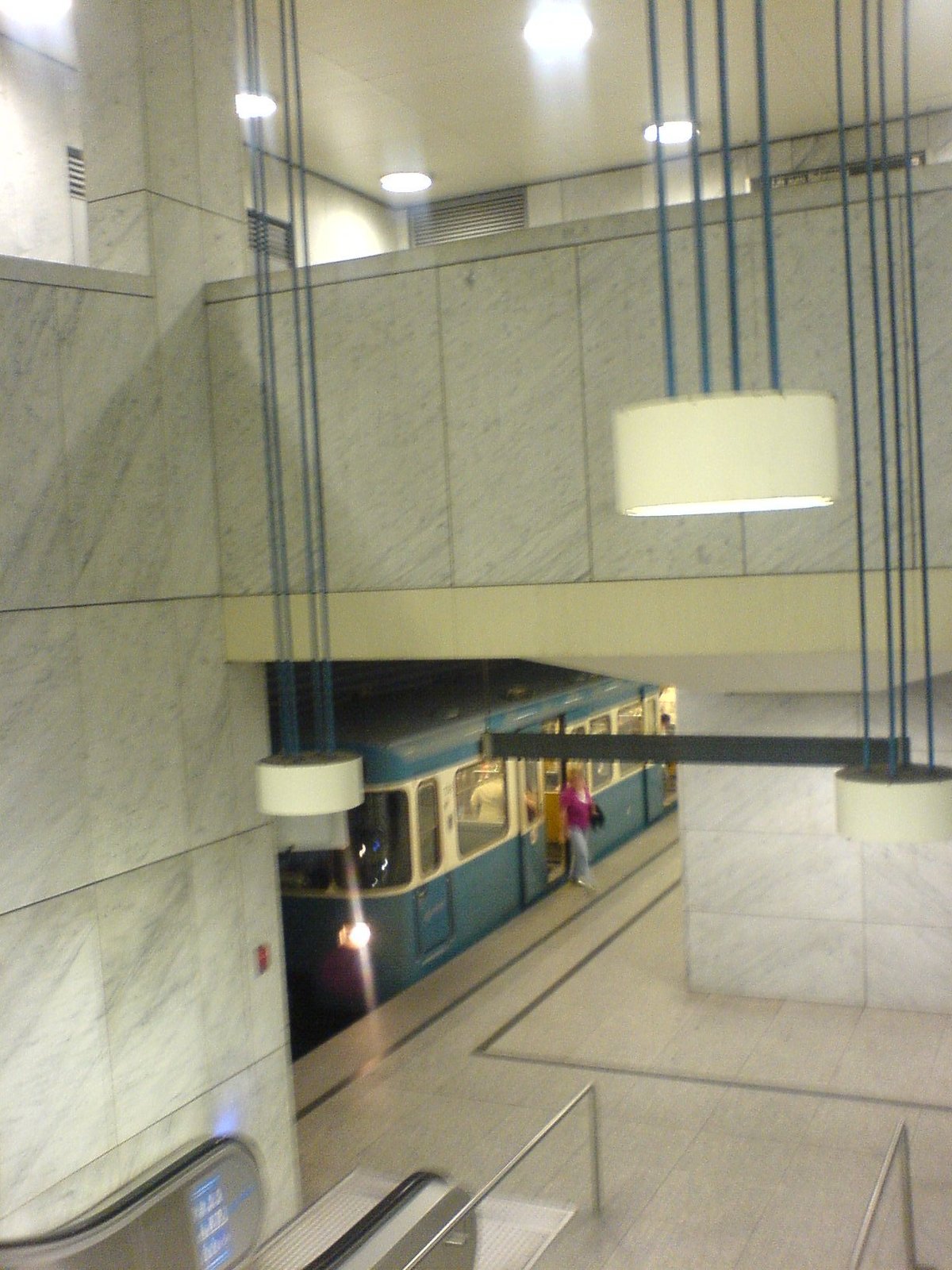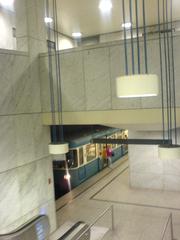
Arabellapark Munich: Visiting Hours, Tickets, and Historical Sites Guide
Date: 15/06/2025
Introduction: Arabellapark Munich at a Glance
Arabellapark, situated in Munich’s dynamic Bogenhausen district, is a showcase of post-war urban planning that has blossomed into a vibrant mixed-use neighborhood. Conceived in the late 1950s and officially developed from the mid-1960s, Arabellapark was envisioned by Josef Schörghuber as a “city within a city”—a self-sufficient urban quarter blending residential, commercial, cultural, and recreational spaces. Its design sought to minimize commuting and foster community interaction, embodying modernist ideals of openness, functionality, and density (Schörghuber Group History; KBP Arabeska Project).
The district’s centerpiece, the Arabella-Hochhaus, is a 23-storey high-rise completed in 1969, now home to the Sheraton Munich Arabellapark Hotel. Arabellapark thrives as a cultural and economic hub, offering easy access to artistic venues like Villa Stuck, the Prinzregenten Theatre, and iconic monuments such as the Angel of Peace. With excellent transport links (U4 subway line), comprehensive cycling paths, and a commitment to inclusivity, Arabellapark is an essential destination for both locals and visitors (everything.explained.today; Munich Tourist Board).
This guide provides detailed insights into Arabellapark’s history, architecture, cultural highlights, practical visitor information including visiting hours and ticketing, accommodation, dining, and travel tips.
Contents
- Introduction
- Historical Background and Urban Development
- Architectural Context and Urban Planning
- Arabella-Hochhaus: The Iconic Landmark
- Cultural Importance of Arabellapark
- Practical Visitor Information
- Attractions and Activities
- Economic Significance
- Community Significance
- Events and Festivals
- Sustainability and Future Developments
- Frequently Asked Questions (FAQ)
- Summary and Visitor Recommendations
- Sources and Further Reading
Historical Background and Urban Development
Origins and Vision
Arabellapark’s origins date to Munich’s post-war expansion. Josef Schörghuber recognized the potential of a 45-hectare area in Bogenhausen and, in 1965, secured approval for a master plan emphasizing a multifunctional, walkable district that integrated living, working, and leisure—a novel concept for its time (Schörghuber Group History).
Construction and Architectural Milestones
Construction began in 1966 with the Arabella-Hochhaus as the flagship project. Completed in 1969, this building was designed as an extended-stay hotel with 700 apartments and hotel-like amenities. Over time, it has housed a hotel, clinics, shops, restaurants, and even the renowned Musicland Studios, where international music legends recorded (Schörghuber Group History).
Other significant developments include the Arabeska building (completed 2013), which offers modern office spaces, apartments, and daycare facilities, reflecting contemporary architectural trends (KBP Arabeska Project).
Integration and Infrastructure
Arabellapark’s thoughtful integration into Munich’s urban fabric includes direct connections via the U4 subway line and extensive pedestrian and cycling infrastructure. The district’s layout features green spaces, plazas, and ample parking managed by Bavaria Parkgaragen (Unser Bogenhausen; MVV Munich).
Architectural Context and Urban Planning
Arabellapark exemplifies post-war modernist planning: high-density, mixed-use buildings in a grid layout with wide boulevards and lush landscaping. The neighborhood’s diverse skyline features:
- Arabella-Hochhaus: A pioneering mixed-use high-rise
- Arabeska: Modern, sustainable architecture
- Hypo-Hochhaus: Munich’s third tallest skyscraper
- BayWa-Sternhaus and the “Green High-Rise”: Contributing to the district’s distinct identity (Entdecken München)
Arabella-Hochhaus: The Iconic Landmark
Design and Features
Designed by Toby Schmidbauer and built between 1966 and 1969, the 23-storey Arabella-Hochhaus stands 75 meters tall, reflecting International Style architecture with its repetitive window grids and emphasis on functionality. The building is a mixed-use marvel, housing hotel rooms, apartments, offices, and clinics. Its adaptive reuse, notably for the 1972 Olympics, set a precedent for hospitality and urban flexibility (everything.explained.today).
Hospitality and Amenities
Today, the building is home to the Sheraton Munich Arabellapark Hotel, offering over 467 rooms, a rooftop spa with panoramic city and Alpine views, and high-end amenities for both leisure and business travelers (Four Points by Sheraton).
Cultural Importance of Arabellapark
Arabellapark is more than just a business and residential district; it’s a cultural hotspot in Munich’s east.
Art and Historical Venues
- Villa Stuck Museum: Showcasing works by Franz von Stuck, with rotating exhibitions. Open Tue–Sun, 10 AM–6 PM; tickets €8 adult/€4 concession (The Munich Times).
- Prinzregenten Theatre: Hosting diverse performances, with ticket prices varying by production.
Monuments and Community Events
- Angel of Peace (Friedensengel): A 38-meter column with a gold-leaf statue, free entry, open during daylight for panoramic city views.
- Peace Conference: Annual event at Smartvillage, addressing peace, human rights, and inclusion (Peace Conference Program 2025).
Local events often reflect the district’s commitment to cultural diversity, social inclusion, and civic engagement.
Practical Visitor Information
Visiting Hours & Tickets
- Arabellapark District: Open 24/7; free entry (public spaces)
- Villa Stuck Museum: Tue–Sun, 10 AM–6 PM; €8/€4
- Prinzregenten Theatre: Varies by event
- Angel of Peace: Daylight hours; free
Accessibility
Arabellapark is easily reached via the U4 subway line, with Arabellapark station serving as a transit hub. The area is pedestrian- and wheelchair-friendly, with barrier-free public spaces and elevators in major buildings (MVV Munich).
Travel Tips
- Comfortable walking shoes are recommended.
- Visit on weekdays for a lively business atmosphere; weekends offer a quieter ambience.
- Check official websites for guided tours and special events.
Attractions and Activities
Local Highlights
- Rosenkavalierplatz: Central square for markets and events
- Cadillac & Veranda Kino: Local cinema with international and German films
- Mae West Sculpture: Notable modern art installation
Nearby Sights
- English Garden: Expansive park ideal for leisure activities (Lonely Planet)
- Wiener Markt: Traditional Bavarian market
- Museum Villa Stuck: Art and design exhibitions
Family & Wellness
- Deutsches Museum Kinderreich: Interactive children’s museum
- SEA LIFE Munich: Aquarium
- Zoo Hellabrunn: Conservation-focused zoo
- Four Points Spa: 800 m² rooftop wellness area with pool, sauna, and city views (Marriott Experiences)
Economic Significance
Arabellapark is a major business and hospitality hub:
- Hotels: Sheraton Munich Arabellapark, Four Points by Sheraton, Leonardo Hotel
- Business: Home to the 114-meter Hypo-Hochhaus and modern office complexes (Arabella Hospitality History)
- Innovation: Attracts international scholars, startups, and entrepreneurs (Munich Business)
Community Significance
Urban Life & Sustainability
Arabellapark’s planning integrates mixed-use buildings, green spaces, and sustainable practices. Future-oriented projects like the “Grünes Hochhaus” (Green High-Rise) illustrate ongoing commitment to eco-friendly development (Stadt München).
Social Inclusion
The district encourages diversity and accessibility, supporting refugees, migrants, LGBTIQ* individuals, and the disabled through community initiatives (Peace Conference Program 2025).
Events and Festivals
While Arabellapark hosts local street festivals and the annual Peace Conference, its excellent transport links give visitors easy access to major Munich events such as Oktoberfest and the Tollwood Festival (Lonely Planet).
Sustainability and Future Developments
Arabellapark continues to evolve with sustainable architecture projects, energy-efficient buildings, and climate-neutral goals for 2025, reinforcing its reputation as a model for modern urban living (Stadt München).
Frequently Asked Questions (FAQ)
Q: Is Arabellapark free to visit?
A: Yes, public spaces are open 24/7 and free of charge.
Q: How do I get to Arabellapark?
A: Take the U4 subway line to Arabellapark station; the area is also accessible by bus and car.
Q: Are guided tours available?
A: Guided walking tours are offered seasonally; check with local operators or the Munich Tourist Board.
Q: What are the main attractions nearby?
A: Villa Stuck Museum, English Garden, Angel of Peace, and Bogenhausen’s Art Nouveau buildings.
Q: Is the district wheelchair accessible?
A: Yes, most public areas and major venues are barrier-free.
Summary and Visitor Recommendations
Arabellapark exemplifies Munich’s successful blend of modernist architecture, cultural vibrancy, and sustainable urban planning. The district’s iconic landmarks, such as the Arabella-Hochhaus and Arabeska, coupled with rich cultural venues and green spaces, create a multifaceted experience for visitors. With excellent public transport, diverse dining and accommodation, and a focus on accessibility and inclusion, Arabellapark is ideal for travelers seeking a contemporary Munich adventure.
For a rewarding experience, stay at one of the district’s renowned hotels, utilize the U4 subway for easy city access, and consult official sources or the Audiala app for the latest tour and event updates. Whether you’re exploring on foot, attending a festival, or enjoying the rooftop spa, Arabellapark is a dynamic urban destination not to be missed.
Sources and Further Reading
- Schörghuber Group History
- KBP Arabeska Project
- Everything Explained Today (Arabella Hochhaus)
- Munich Tourist Board
- The Munich Times
- Peace Conference Program 2025
- Unser Bogenhausen
- MVV Munich
- Entdecken München
- Arabella Hospitality History
- Munich Business
- Marriott Experiences
- Stadt München
- Timeout Munich
- Leonardo Hotel
- Lonely Planet





































































































